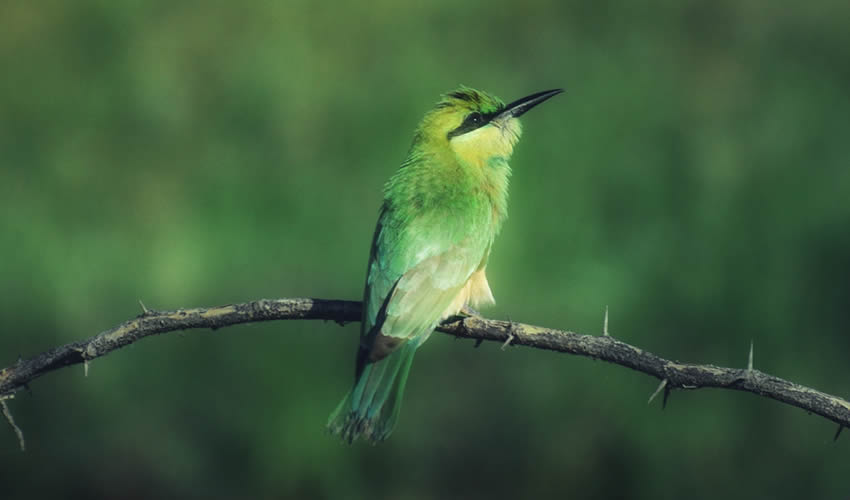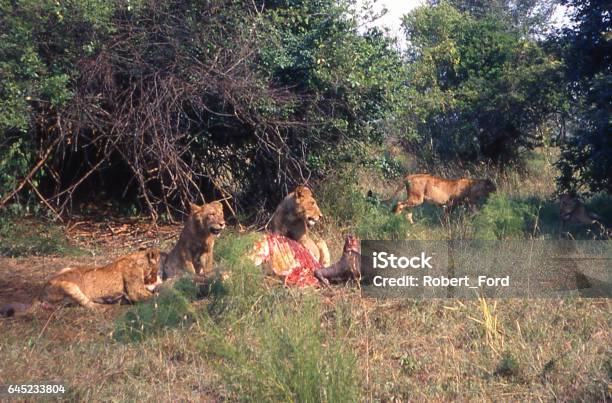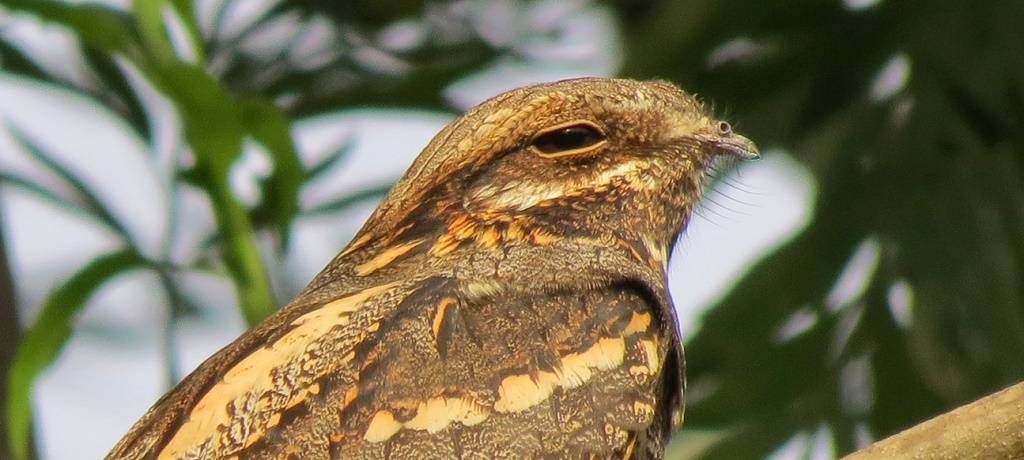Akagera Through a Lens: A Wildlife Photographer's Expedition

Akagera National Park. Even the name conjures images of untamed Africa, of vast savannas teeming with life. As a wildlife photographer specializing in birds for Africa Geographic, I recently had the privilege of spending several weeks immersed in this Rwandan gem. It was an expedition filled with challenges, triumphs, and a profound appreciation for the resilience of nature and the warmth of the Rwandan people. This isn’t just a review; it’s a glimpse into the heart of Akagera, seen through the lens of my camera.
A panoramic view of the Akagera landscape, showcasing rolling hills and diverse habitats, captured from a high vantage point to provide a sense of the park's scale and beauty.
Chasing Ghosts on Lake Ihema: The Shoebill Quest
My days in Akagera often began before dawn. One such morning, I found myself on Lake Ihema, the largest lake in the park, aboard a small boat. The mission: to photograph the elusive shoebill. Rising at 4:30 AM is never easy, but the anticipation of capturing this prehistoric-looking bird spurred me on.
The lake was shrouded in a thick mist, the air cool and damp. As the first rays of light pierced the darkness, the sounds of awakening birds filled the air – the calls of fish eagles, the chirping of weavers, and the distant honking of geese. It was a symphony of the African dawn.
Photographing in such low light presented a significant challenge. I was using my Canon EOS R5 with a 600mm f/4 lens, a combination that offers exceptional image quality but demands stability. A monopod was essential to minimize camera shake.
After what felt like an eternity, we spotted it – a shoebill standing motionless in the shallows. I carefully adjusted my settings, focusing intently. Just as I was about to press the shutter, it took flight, its massive wings beating the air. Frustration washed over me. This was a common occurrence in wildlife photography; patience is paramount.
Undeterred, we continued our search. Finally, luck was on our side. As the sun crested the horizon, painting the sky in hues of orange and gold, the shoebill reappeared. This time, I was ready. I managed to capture a sharp image of it against the rising sun, the background blurred into a pleasing bokeh. The satisfaction was immense.
Tracking Lions in the Savanna Heat
The midday sun in Akagera can be brutal. But the promise of encountering lions kept me going. Accompanied by my knowledgeable guide, Emmanuel, we ventured into the savanna plains. The heat shimmered off the tall grasses, creating a mirage-like effect.
The tension was palpable as we scanned the horizon. Finally, Emmanuel pointed towards a cluster of acacia trees. There, in the shade, lay a pride of lions – a magnificent male, several females, and a few playful cubs.
To minimize disturbance, I used a camouflage blind draped over the vehicle. I switched to my Canon EF 100-400mm f/4.5-5.6L IS II USM lens, a versatile option for capturing wildlife at varying distances.
The challenge was to capture images that conveyed the lions' personalities and interactions. I focused on their expressions, their subtle movements, and the way they interacted with each other. Shooting in the harsh midday sun required careful adjustments to the ISO to maintain sharpness and avoid overexposure.
The landscape itself was a character in the story – the iconic acacia trees, the golden grasses swaying in the breeze, and the red earth that defines so much of Africa.
 A pride of lions resting under the shade of an acacia tree during midday, highlighting the arid landscape and the challenge of photographing in harsh sunlight.
A pride of lions resting under the shade of an acacia tree during midday, highlighting the arid landscape and the challenge of photographing in harsh sunlight.
Whispers in the Dark: Photographing Nocturnal Birds
As darkness descended, a different world awakened in Akagera. With Immaculee, a local birding expert, I embarked on a nighttime walk to photograph nocturnal birds. Armed with a headlamp fitted with a red filter to minimize disturbance, we ventured into the bush.
The sounds of the African night were captivating – the constant chirping of crickets, the rustling of leaves, and the distant call of a hyena. Our target was the Verreaux's eagle-owl, a magnificent bird with striking features.
Photographing birds in near-total darkness is arguably one of the most challenging aspects of wildlife photography. I used my Sony a7S III with a 200mm f/2.8 lens, a combination known for its exceptional low-light performance. A high ISO setting was essential to capture any detail.
After what felt like an eternity, we heard its distinctive hoot. Immaculee expertly mimicked the call, and the owl responded, flying closer. Finally, it perched on a branch, its piercing yellow eyes reflecting the beam of my headlamp. I held my breath and pressed the shutter. The resulting image, though grainy due to the high ISO, captured the essence of this elusive creature.
Beyond the Big Game: Photographic Activities and Ethical Considerations
Akagera offers more than just the iconic "Big Five." I spent time setting up camera traps near a waterhole, hoping to capture images of kingfishers diving for fish. I also used my Canon EF 100mm f/2.8L Macro IS USM lens to photograph the colorful bee-eaters that flitted among the trees.
Photography isn't just about capturing beautiful images; it's also about responsibility. I was fortunate to attend a photography workshop led by Immaculee, focusing on ethical wildlife photography practices. We discussed the importance of minimizing disturbance to wildlife, respecting their habitat, and using photography as a tool for conservation.
A Taste of Rwanda: Bush Breakfast and Traditional Dinner
The culinary experiences in Akagera were as memorable as the wildlife encounters. Ruzizi Tented Lodge prepared a delightful bush breakfast for us one morning. The aroma of Rwandan coffee filled the air, complementing the taste of fresh passion fruit and flaky local pastries. The setting was idyllic – a table set up overlooking Lake Ihema, with hippos visible in the distance.
 A meticulously prepared bush breakfast served overlooking Lake Ihema, blending culinary delight with the stunning natural backdrop of Akagera.
A meticulously prepared bush breakfast served overlooking Lake Ihema, blending culinary delight with the stunning natural backdrop of Akagera.
One evening, I enjoyed a traditional Rwandan dinner (Agatogo – plantains and peanuts) at a community-run restaurant near the park's entrance. Chatting with the owner, I learned about the restaurant's role in supporting local families. The flavors of the Agatogo were rich and satisfying, the warmth of the community was genuine, and the sounds of Rwandan music filled the air. It was a truly immersive cultural experience.
The Diverse Landscapes of Akagera
Akagera's beauty lies in its diversity.
- Savanna Plains: The wide-open savanna plains provided ample opportunities to photograph large herds of impala and zebras. The color palette was stunning – the golden grasslands against the backdrop of blue skies.
- Papyrus Swamps: The dense papyrus swamps around Lake Ihema and Lake Shakani presented both challenges and rewards. The humidity was intense, the sounds of insects were deafening, but the opportunity to photograph the rare papyrus gonolek made it all worthwhile.
- Rolling Hills: The panoramic views from the top of the rolling hills were breathtaking. I used these vantage points to capture the overall landscape and the movement of wildlife across it, playing with the light and shadow across the hills.
Tips for Aspiring Wildlife Photographers in Akagera
- Gear: Invest in good quality camera equipment, including a telephoto lens (at least 400mm), a wide-angle lens for landscapes, and a sturdy tripod or monopod.
- Patience: Wildlife photography requires patience. Be prepared to spend long hours waiting for the perfect shot.
- Respect: Always respect the wildlife and their habitat. Maintain a safe distance and avoid disturbing them.
- Local Guides: Hire a local guide. Their knowledge of the park and its wildlife is invaluable.
- Ethical Practices: Prioritize ethical wildlife photography practices. Never put an animal at risk for the sake of a photograph.
- Preparation is key: Bring rain gear to protect your equipment.
Final Thoughts
My photographic expedition to Akagera National Park was an unforgettable experience. It was a journey of discovery, both of the natural world and of myself. The challenges were many, but the rewards were even greater. Akagera is a place that stays with you long after you leave – a reminder of the beauty, resilience, and fragility of our planet. I encourage any wildlife photographer or nature enthusiast to visit this remarkable park and experience its magic firsthand. You may be surprised what you discover, not just through your lens, but within yourself.